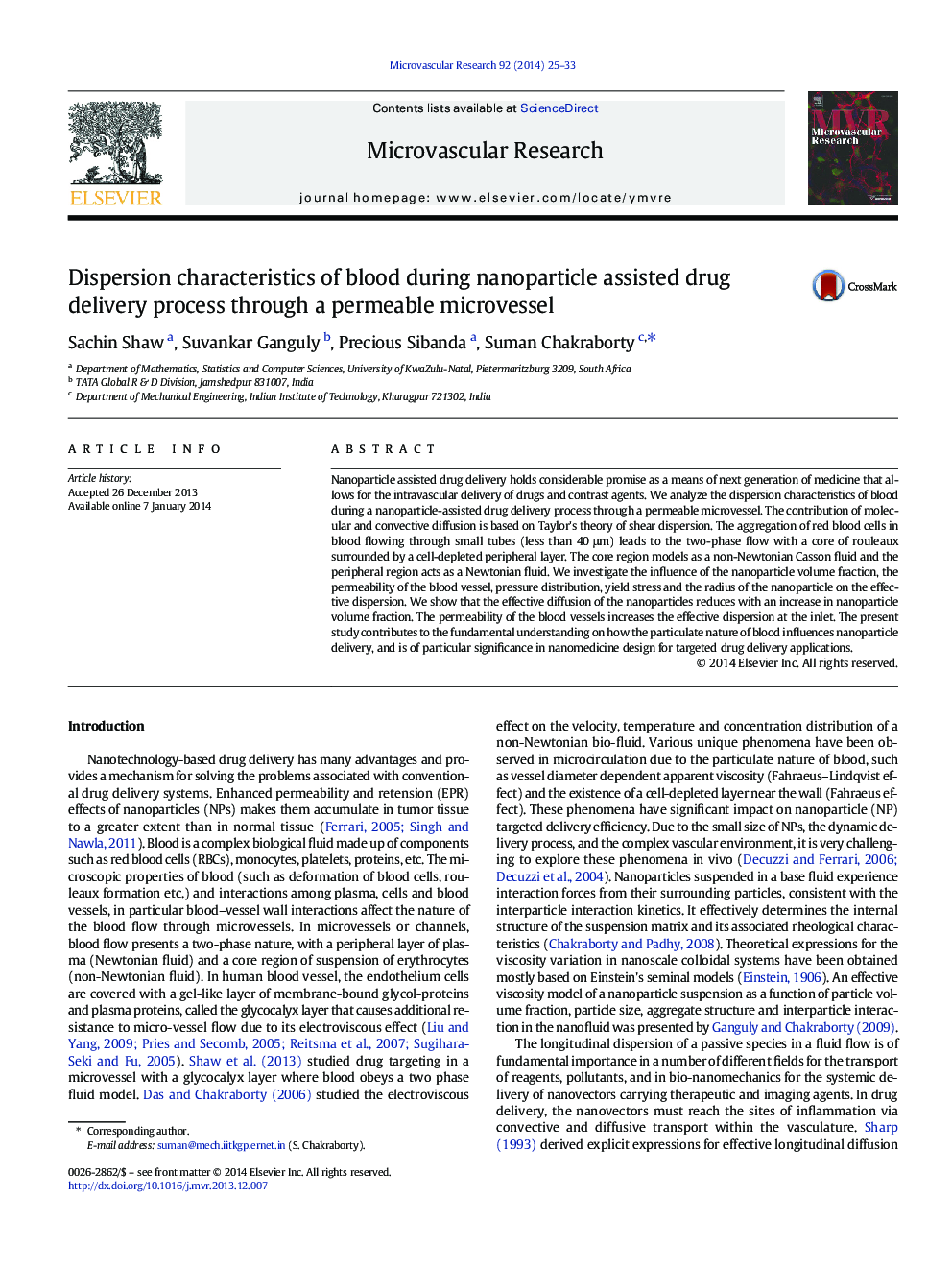| Article ID | Journal | Published Year | Pages | File Type |
|---|---|---|---|---|
| 1994874 | Microvascular Research | 2014 | 9 Pages |
•We analyze the dispersion characteristics of blood.•We consider nanoparticle-assisted drug delivery process through a permeable microvessel.•Effective diffusion of nanoparticles reduces with increase in nanoparticle volume fraction.•We delineate the effect of particulate nature of blood on nanoparticle delivery.•Results are applicable to nanomedicine design for targeted drug delivery.
Nanoparticle assisted drug delivery holds considerable promise as a means of next generation of medicine that allows for the intravascular delivery of drugs and contrast agents. We analyze the dispersion characteristics of blood during a nanoparticle-assisted drug delivery process through a permeable microvessel. The contribution of molecular and convective diffusion is based on Taylor's theory of shear dispersion. The aggregation of red blood cells in blood flowing through small tubes (less than 40 μm) leads to the two-phase flow with a core of rouleaux surrounded by a cell-depleted peripheral layer. The core region models as a non-Newtonian Casson fluid and the peripheral region acts as a Newtonian fluid. We investigate the influence of the nanoparticle volume fraction, the permeability of the blood vessel, pressure distribution, yield stress and the radius of the nanoparticle on the effective dispersion. We show that the effective diffusion of the nanoparticles reduces with an increase in nanoparticle volume fraction. The permeability of the blood vessels increases the effective dispersion at the inlet. The present study contributes to the fundamental understanding on how the particulate nature of blood influences nanoparticle delivery, and is of particular significance in nanomedicine design for targeted drug delivery applications.
